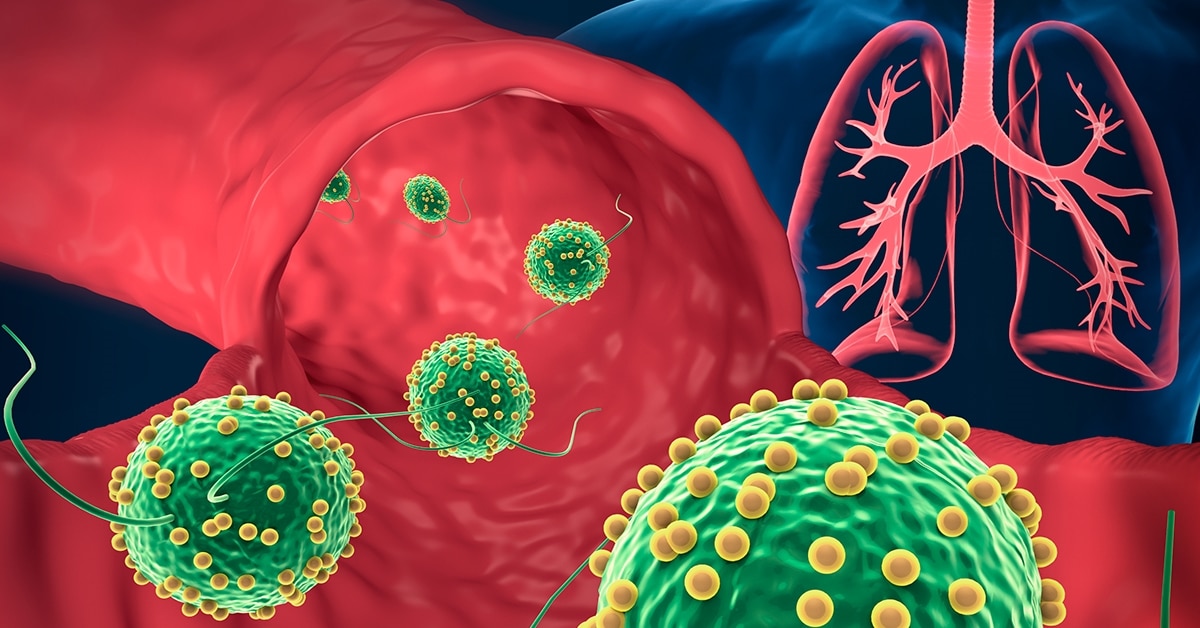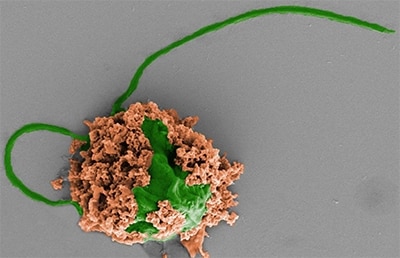A n artist’s illustration of the microbots entering the lungs to fight pneumonia. (Image Credit: Wang lab/UC San Diego)
n artist’s illustration of the microbots entering the lungs to fight pneumonia. (Image Credit: Wang lab/UC San Diego)
UC San Diego nanoengineers developed microbots designed to eliminate bacterial pneumonia in the lungs. So far, the team has deployed these antibiotic-armed tiny robots in a targeted area, successfully treating mice infected with pneumonia. The microbots could also improve antibiotic delivery to kill bacteria, saving a patient’s life.
“With an IV injection, sometimes only a very small fraction of antibiotics will get into the lungs. That’s why many current antibiotic treatments for pneumonia don’t work as well as needed, leading to very high mortality rates in the sickest patients,” said UC San Diego School of Medicine and study co-author Victor Nize. “Based on these mouse data, we see that the microrobots could potentially improve antibiotic penetration to kill bacterial pathogens and save more patients’ lives.”
The researchers sought inspiration from nature to design their microbots composed of algae and special nanoparticles housing antibiotics. These algae cells provide the bots with mobility capabilities. And neutrophil cell membranes blanket the nanoparticles to make them absorb and neutralize inflammation-causing molecules. Also, the microbots move quickly to the source of infection in deep lung tissue.

The microbots are made of algae (green) covered with biodegradable polymer nanoparticles (brown) on the surface. (Image Credit: Fangyu Zhang and Zhengxing Li)
They tested their treatment method against the Pseudomonas aeruginosa bacteria, commonly found in hospital patients requiring mechanical ventilation. The team injected mice with that bacterial pneumonia, and deployed the microbots through a tube leading down their windpipe. They managed to kill off the infection after a week.
According to the authors, the microbots eliminated the infection with a smaller antibiotic dose compared to an IV blood injection requiring a dose 3,000 times larger. Delivering and spreading the drug at the infection site made it possible to cure the disease more efficiently. The mice that underwent this treatment survived the past 30 days. Sadly, those who didn’t receive treatment passed away within three days.
“These results show how targeted drug delivery combined with active movement from the microalgae improves therapeutic efficacy,” said Joseph Wang, a nanoengineering professor at the UC San Diego Jacobs School of Engineering.
We’re still a long way from treating pneumonia with these proof-of-concept algae microbots. Next, the researchers plan to validate these results and understand how the immune system responds to the microbots as they aim to test this technique in other animals and humans. “We’re pushing the boundary further in the field of targeted drug delivery,” said Liangfang Zhang, a nanoengineering professor at the UC San Diego Jacobs School of Engineering.
Have a story tip? Message me at: http://twitter.com/Cabe_Atwell
